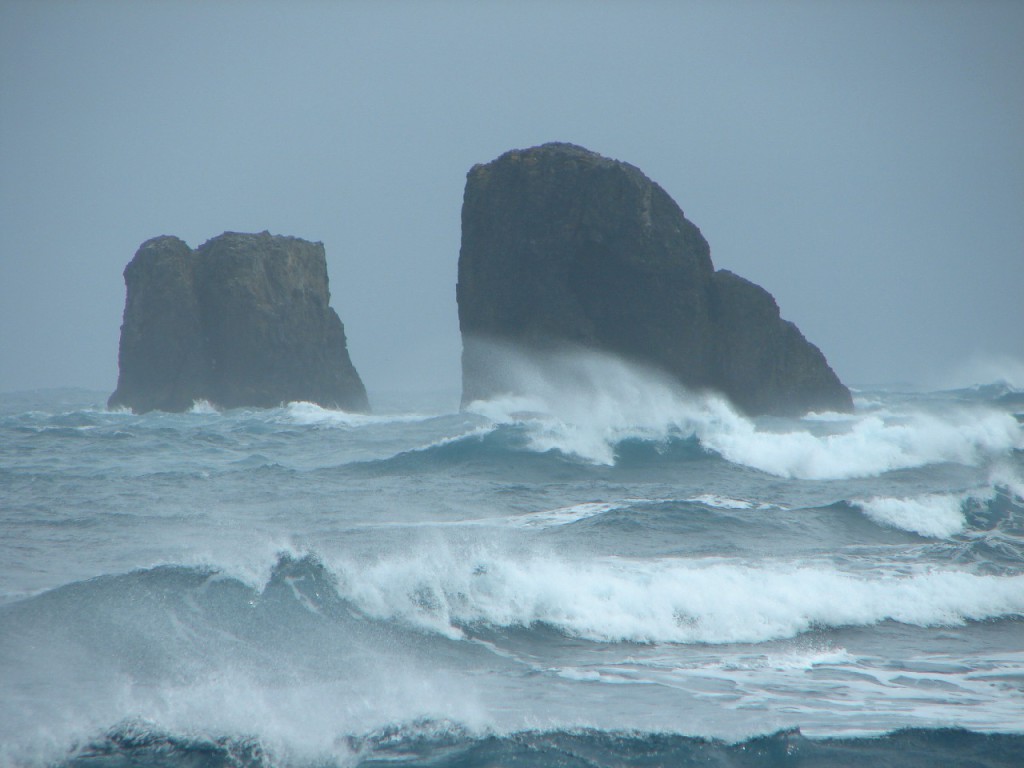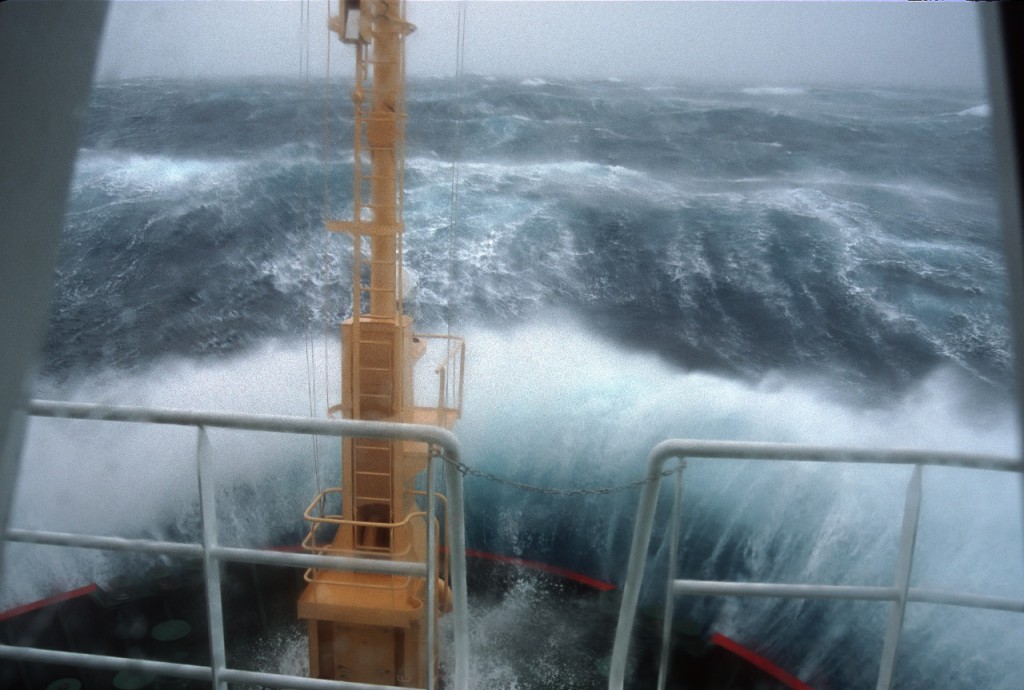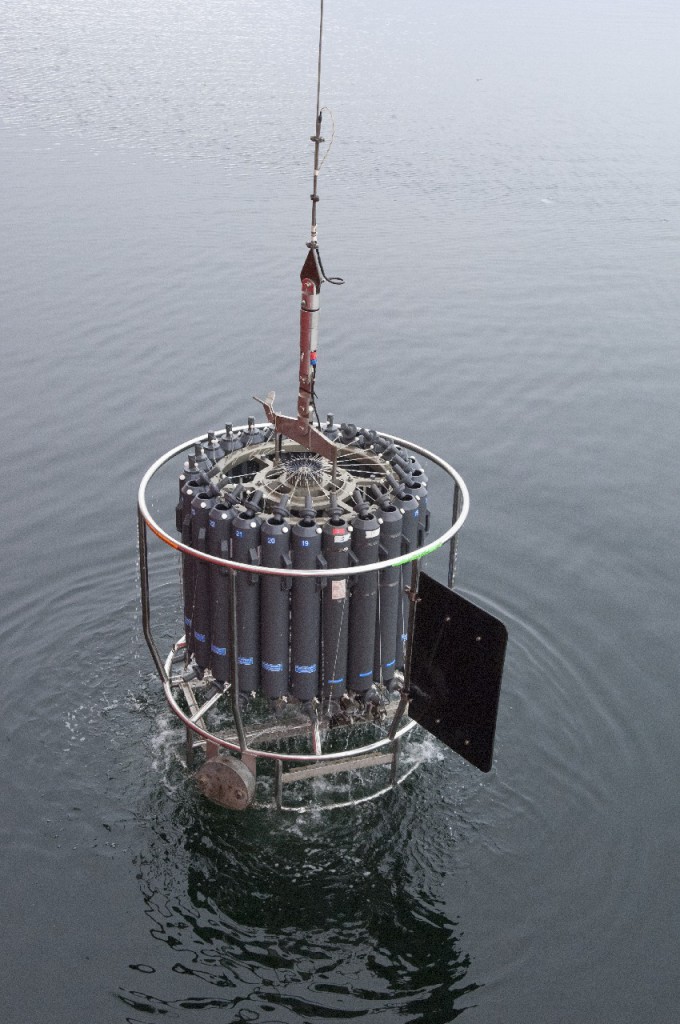New discovery of how carbon is stored in the Southern Ocean
A team of British and Australian scientists has discovered an important method of how carbon is drawn down from the surface of the Southern Ocean to the deep waters beneath. The Southern Ocean is an important carbon sink in the world – around 40% of the annual global CO2 emissions absorbed by the world’s oceans enter through this region.

Reporting this week in the journal Nature Geoscience, scientists from British Antarctic Survey (BAS) and Australia’s national research agency, the Commonwealth Scientific and Industrial Research Organisation (CSIRO), reveal that rather than carbon being absorbed uniformly into the deep ocean in vast areas, it is drawn down and locked away from the atmosphere by plunging currents a thousand kilometres wide.
Winds, currents and massive whirlpools that carry warm and cold water around the ocean — known as eddies — create localised pathways or funnels for carbon to be stored.
Lead author, Dr Jean-Baptiste Sallée from British Antarctic Survey says,
“The Southern Ocean is a large window by which the atmosphere connects to the interior of the ocean below. Until now we didn’t know exactly the physical processes of how carbon ends up being stored deep in the ocean. It’s the combination of winds, currents and eddies that create these carbon-capturing pathways drawing waters down into the deep ocean from the ocean surface.
“Now that we have an improved understanding of the mechanisms for carbon draw-down we are better placed to understand the effects of changing climate and future carbon absorption by the ocean.”

CSIRO co-author, Dr Richard Matear says the rate-limiting step in the anthropogenic carbon uptake by the ocean is the physical transport from the surface into the ocean interior.
“Our study identifies these pathways for the first time and this matches well with observationally–derived estimates of carbon storage in the ocean interior,” Dr Matear says.
Due to the size and remote location of the Southern Ocean, scientists have only recently been able to explore the workings of the ocean with the help of small robotic probes — known as Argo floats. In 2002, 80 floats were deployed in the Southern Ocean to collect information on the temperature and salinity. This unique set of observations spanning 10 years has enabled scientists to investigate this remote region of the world for the first time. The floats are just over a metre in length and dive to depths of 2km. Today, there are over 3,000 floats in the oceans worldwide providing detailed information used in oceanic climate models.
The team also analysed temperature, salinity and pressure data collected from ship-based observations since the 1990s. The instrument used for this is called a CTD profiler which is a cluster of sensors taking measurements as it’s lowered deep down into the ocean to depths of more than 7km.
ENDS
Issued by British Antarctic Survey
British Antarctic Survey media contact:
- Audrey Stevens, Tel: +44 (0)1223 221230; email: auev@bas.ac.uk
- Athena Dinar, Tel: +44 (0)1223 221414; Mobile: +44 07736 921693; email: amdi@bas.ac.uk
CSIRO Wealth from Oceans National Research Flagship (Australia) media contact:
- Craig Macaulay, Tel: +61 3 6232 5219; email: Craig.Macaulay@csiro.au
Antarctic Climate & Ecosystems Cooperative Research Centre (Australia) media contact:
- Miranda Harman, email: Miranda.Harman@acecrc.org.uk
Science contacts:
British Antarctic Survey:
- Dr Jean-Baptiste Sallée, Tel: +44 (0)1223 221232; email: jbsal@bas.ac.uk
CSIRO Wealth from Oceans National Research Flagship (Australia):
- Dr Richard Matear, Tel: +61 3 6232 5243; email: Richard.Matear@csiro.au
- Dr Stephen Rintoul, Tel: +61 3 6232 5393; email: Steve.Rintoul@csiro.au
- Dr Andrew Lenton, email: Andrew.Lenton@csiro.au
Notes for Editors
The paper — Localised subduction of anthropogenic carbon dioxide in the Southern Hemisphere oceans — is published in the August edition of Nature Geoscience (and online on 29th July) by Jean-Baptiste Sallée; Richard J. Matear and Andrew Lenton from CSIRO Marine and Atmospheric Research in Australia; and Stephen R. Rintoul from Antarctic Climate and Ecosystems Cooperative Research Centre in Australia.
This study compliments a paper published in Nature 487, 313–319 (19 July 2012) — Deep carbon export from a Southern Ocean iron-fertilized diatom bloom — by Victor Smetacek, Christine Klaas, Volker H. Strass et al, which outlines the biological processes involved in how carbon is absorbed in the Southern Ocean.

- Eddy
- A massive whirlpool carrying warm and cold water around the ocean that may be formed when a bend in a surface ocean current lengthens and eventually makes a loop which separates from the main current.
- CTD Profiler
- An oceanographic instrument with a cluster of sensors that measure continuous data of depth, salinity and temperature of the ocean. It is deployed from the deck of a research vessel and lowered down deep into the ocean to depths exceeding 10,000m.
- Argo floats
- Small, robotic probes that collect high-quality temperature, pressure and salinity data. There are more than 3,000 underwater robots swimming in the Earth’s oceans at this moment. The probes dive as deep as 2,000m into the ocean for 10 days at a time, after which they re-surface and transmit the data they have collected via satellites. Each float is designed to make around 150 such cycles. International Argo Project
The Natural Environment Research Council (NERC) is the UK’s main agency for funding and managing world-class research, training and knowledge exchange in the environmental sciences. It coordinates some of the world’s most exciting research projects, tackling major issues such as climate change, environmental influences on human health, the genetic make-up of life on earth, and much more. NERC receives around £320 million a year from the government’s science budget, which it uses to fund independent research and training in universities and its own research centres.
CSIRO is Australia’s national science agency and one of the largest and most diverse research agencies in the world. CSIRO’s marine research – delivered through the Wealth from Oceans National Research Flagship – focuses on understanding our oceans and their biodiversity, resources and relationships with the climate system. The Flagship delivers practical science that enables governments, industries and communities to make informed decisions about the sustainable management of marine and coastal resources. Taking a whole-of-system approach to marine science, the Flagship contributes to national and international challenges where oceans play a central role.
Antarctic Climate & Ecosystem Cooperative Research Centre is a multidisciplinary partnership of 21 national and international organizations based at the University of Tasmania, Hobart. It provides science, knowledge and understanding to help Australia meet the challenges of climate change by understanding the crucial role played by Antarctica and the Southern Ocean in global climate, and the impacts of climate change on Australia and the world. The Centre informs governments, the community and scientists about climate change to guide Australia’s future.
